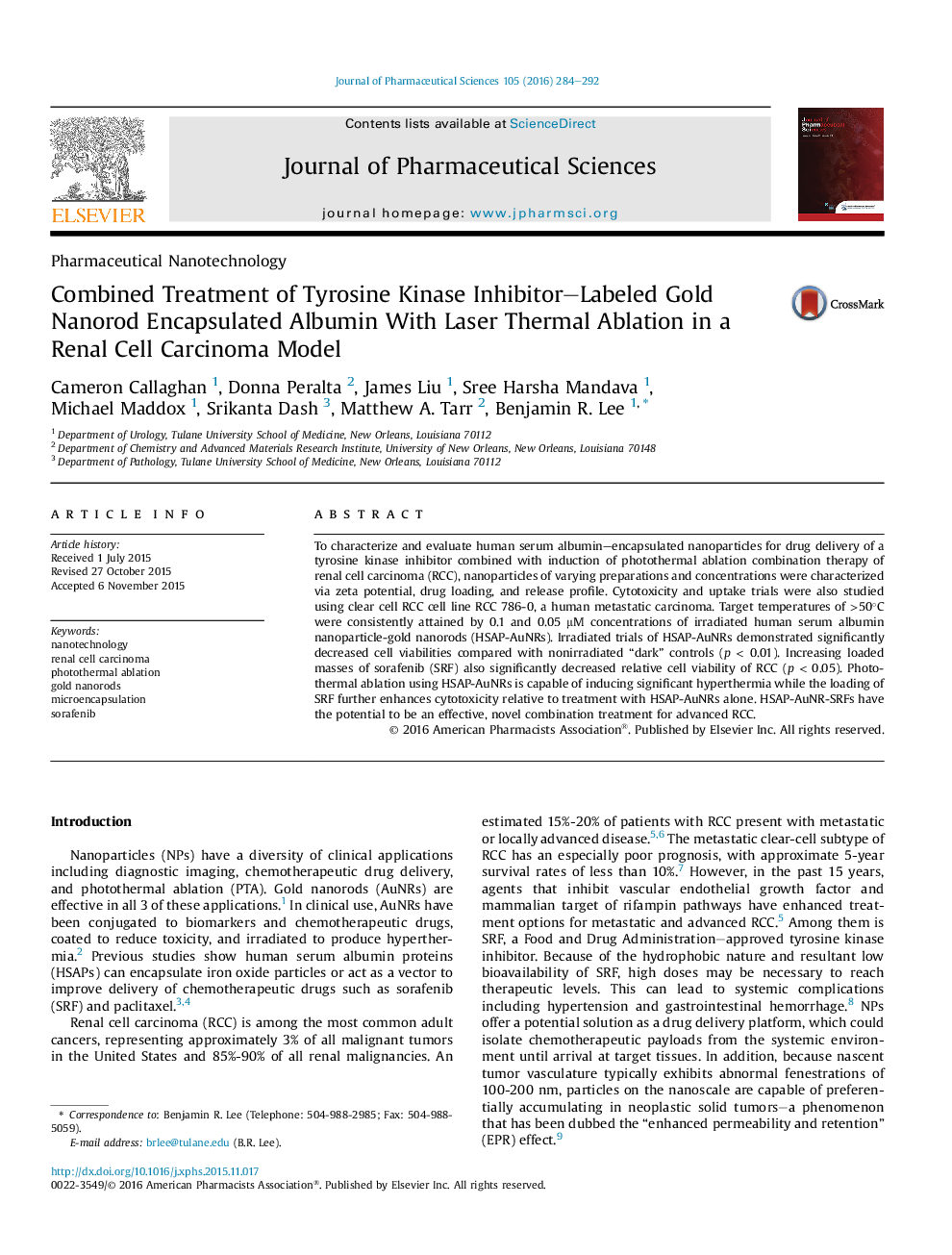| Article ID | Journal | Published Year | Pages | File Type |
|---|---|---|---|---|
| 2484463 | Journal of Pharmaceutical Sciences | 2016 | 9 Pages |
Abstract
To characterize and evaluate human serum albumin-encapsulated nanoparticles for drug delivery of a tyrosine kinase inhibitor combined with induction of photothermal ablation combination therapy of renal cell carcinoma (RCC), nanoparticles of varying preparations and concentrations were characterized via zeta potential, drug loading, and release profile. Cytotoxicity and uptake trials were also studied using clear cell RCC cell line RCC 786-0, a human metastatic carcinoma. Target temperatures of >50°C were consistently attained by 0.1 and 0.05 μM concentrations of irradiated human serum albumin nanoparticle-gold nanorods (HSAP-AuNRs). Irradiated trials of HSAP-AuNRs demonstrated significantly decreased cell viabilities compared with nonirradiated “dark” controls (p < 0.01). Increasing loaded masses of sorafenib (SRF) also significantly decreased relative cell viability of RCC (p < 0.05). Photothermal ablation using HSAP-AuNRs is capable of inducing significant hyperthermia while the loading of SRF further enhances cytotoxicity relative to treatment with HSAP-AuNRs alone. HSAP-AuNR-SRFs have the potential to be an effective, novel combination treatment for advanced RCC.
Keywords
Related Topics
Health Sciences
Pharmacology, Toxicology and Pharmaceutical Science
Drug Discovery
Authors
Cameron Callaghan, Donna Peralta, James Liu, Sree Harsha Mandava, Michael Maddox, Srikanta Dash, Matthew A. Tarr, Benjamin R. Lee,
